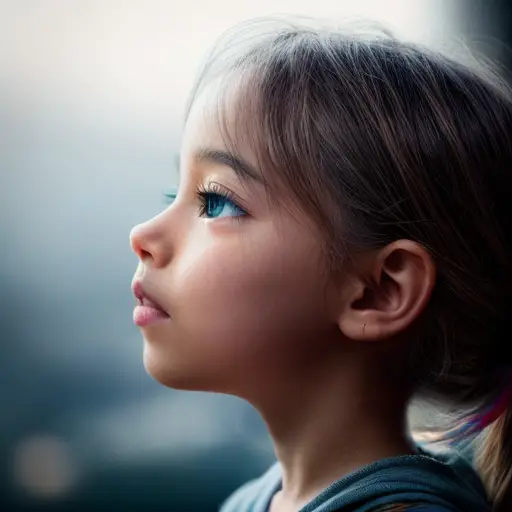Introduction to Magical Thinking in Child Development
Alright, folks, buckle up for a whimsical journey into the enchanting world of magical thinking in child development! Picture this: you're a kid, and your imagination knows no bounds. Suddenly, you're convinced that your stuffed animals come to life when you're not looking, and that a sprinkle of fairy dust can make your wildest dreams come true. This delightful phenomenon, my friends, is what we call magical thinking. It's that delightful stage where children believe in the extraordinary, where unicorns roam freely in their minds, and where a simple cardboard box can transform into a spaceship bound for the moon. So, grab your wands and join me as we explore the fascinating realm of magical thinking and its role in shaping the imaginative minds of our little ones. Trust me, it's going to be a spellbinding adventure!
Understanding the Origins and Characteristics of Magical Thinking
An interesting fact about magical thinking in child development is that it is a normal and necessary part of cognitive development. Children between the ages of 2 and 7 often engage in magical thinking, where they believe that their thoughts, wishes, or actions can directly influence events or outcomes. This type of thinking allows children to explore their imagination, creativity, and problem-solving skills. It also helps them make sense of the world around them, as they try to understand cause and effect relationships.
Let's dive deep into the captivating origins and enchanting characteristics of magical thinking in child development. Picture this: young minds, brimming with curiosity and wonder, are naturally drawn to the mystical and fantastical. It's during this phase that children believe in the extraordinary, where their imaginations run wild and logic takes a backseat. Magical thinking allows them to make sense of the world around them, bridging the gap between reality and fantasy. It's a beautiful blend of innocence and creativity, where a simple stick can transform into a powerful wand and a puddle becomes a portal to a magical realm. So, let's embark on a journey to unravel the secrets behind this whimsical phenomenon and gain a deeper understanding of how it shapes the imaginative minds of our little ones. Get ready to be spellbound!
The Role of Magical Thinking in Cognitive Development

Magical thinking plays a crucial role in the cognitive development of children, opening up a world of possibilities and fostering their creative thinking skills. During this phase, children believe in the power of their thoughts and imagination, allowing them to explore and make sense of the world around them in a unique way. Magical thinking allows children to connect cause and effect, even if the connections may seem illogical to adults. For example, a child might believe that wearing a superhero cape will grant them superpowers, showcasing their ability to create imaginary scenarios and problem-solve within those contexts.
Furthermore, magical thinking helps children develop their symbolic thinking skills. They can use objects or symbols to represent something else entirely, such as using a stick as a magic wand or a blanket as a superhero cape. This ability to engage in symbolic play is a stepping stone towards more complex cognitive processes, such as abstract thinking and problem-solving.
Magical thinking also serves as a tool for emotional regulation and coping with uncertainty. Children often rely on magical beliefs to feel a sense of control and security in a world that can be overwhelming and unpredictable. Believing in magical creatures or rituals can provide comfort and reassurance, helping children navigate through challenging situations and manage their emotions effectively.
It's important to note that while magical thinking is a natural part of child development, it gradually diminishes as children grow older and gain a better understanding of the world's realities. As they acquire more knowledge and experience, their thinking becomes more logical and rational. However, the imaginative and creative skills nurtured during the magical thinking phase continue to shape their cognitive development, fostering innovation, problem-solving, and the ability to think outside the box.
In conclusion, magical thinking in child development plays a vital role in cognitive growth. It allows children to explore their imagination, develop symbolic thinking, regulate emotions, and build problem-solving skills. So, let's embrace the magic and wonder of childhood, for it is through these fantastical beliefs that our little ones embark on a journey of cognitive development and endless possibilities.
Implications and Practical Applications of Magical Thinking in Parenting and Education
Fun fact: Did you know that magical thinking is a common and fascinating phenomenon in child development? Children often engage in magical thinking, believing that their thoughts, wishes, or actions can directly influence events or outcomes. For instance, a child might think that wearing their lucky socks will help them perform better in a game or that making a wish while blowing out birthday candles will make it come true. This imaginative and enchanting aspect of child development allows them to explore their creativity and develop a sense of wonder about the world around them.
Understanding the implications and practical applications of magical thinking in parenting and education can greatly enhance the learning and development experiences of children. Parents and educators can harness the power of magical thinking to foster creativity, imagination, and problem-solving skills. By encouraging children to engage in imaginative play, such as pretending to be superheroes or creating fantastical stories, adults can support their cognitive growth and emotional well-being. Additionally, incorporating magical elements into educational activities, such as using props or storytelling, can make learning more engaging and memorable. By embracing and nurturing the magical thinking phase, parents and educators can create an environment that celebrates the wonder and curiosity of childhood, paving the way for holistic development and a lifelong love for learning.

